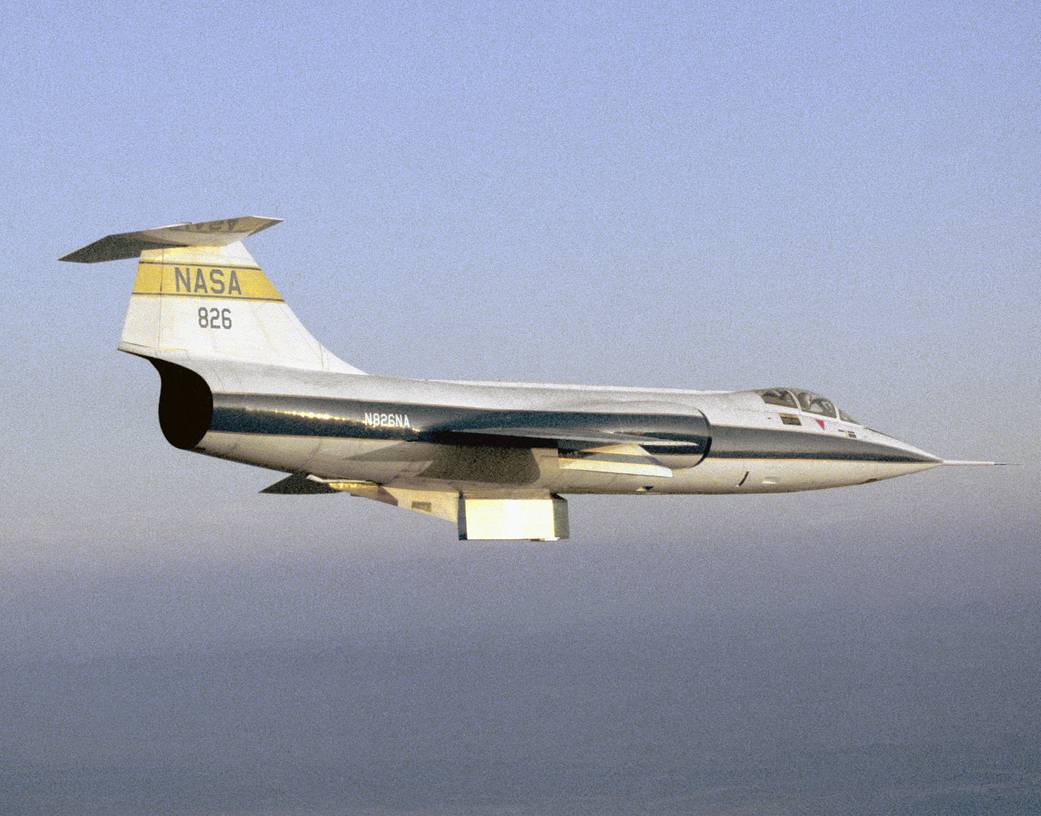EC93-42325-22
F-104G N826NA during a 1993 flight over the Mojave desert, outfitted with an experiment pylon under the center fuselage and wing racks. The F-104 was originally designed by Kelly Johnson of the Lockheed Skunk Works as a day fighter. The aircraft soon proved ideal for both research and training. For instance, a modified F-104 tested the reaction control jets for the X-15. The F-104’s short wings and low lift-to-drag ratio made it ideal to simulate the X-15 landing profile, which the F-104s often undertook before X-15 flights to acquaint pilots with the rocket plane’s landing characteristics. This training role continued with the lifting bodies. NASA F-104s were also used for high-speed research after the X-1E was retired. Finally, the F-104s were also used as chase planes for research missions. The F-104G was a late model designed as a fighter bomber for low-level strike missions. It was built for use by the West German Air Force and other foreign governments. N826NA accomplished a wide-range of research activities, including tests of the Space Shuttle’s Thermal Protection System (TPS) tiles. The aircraft made 1,415 flights before being retired. It is now on display at the Armstrong Flight Research Center, Edwards, CA.1993NASA Photo› F-104 Project Description
2 min read


























